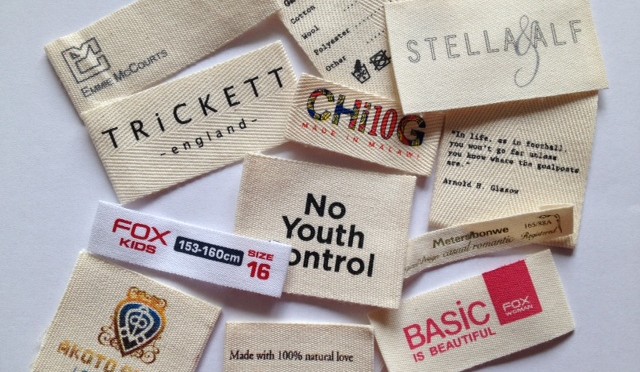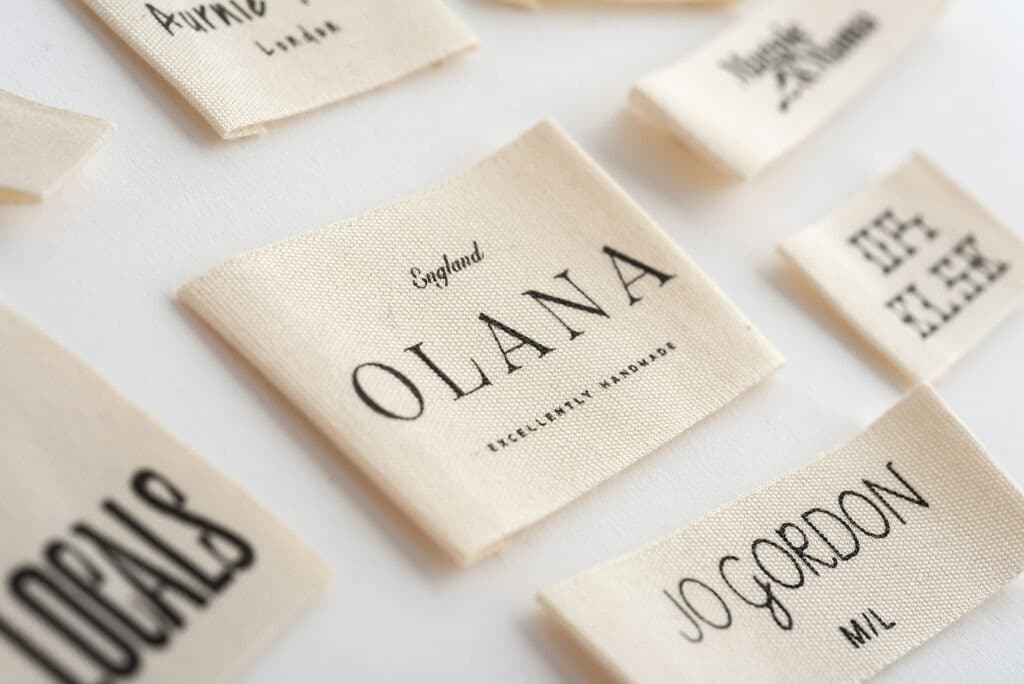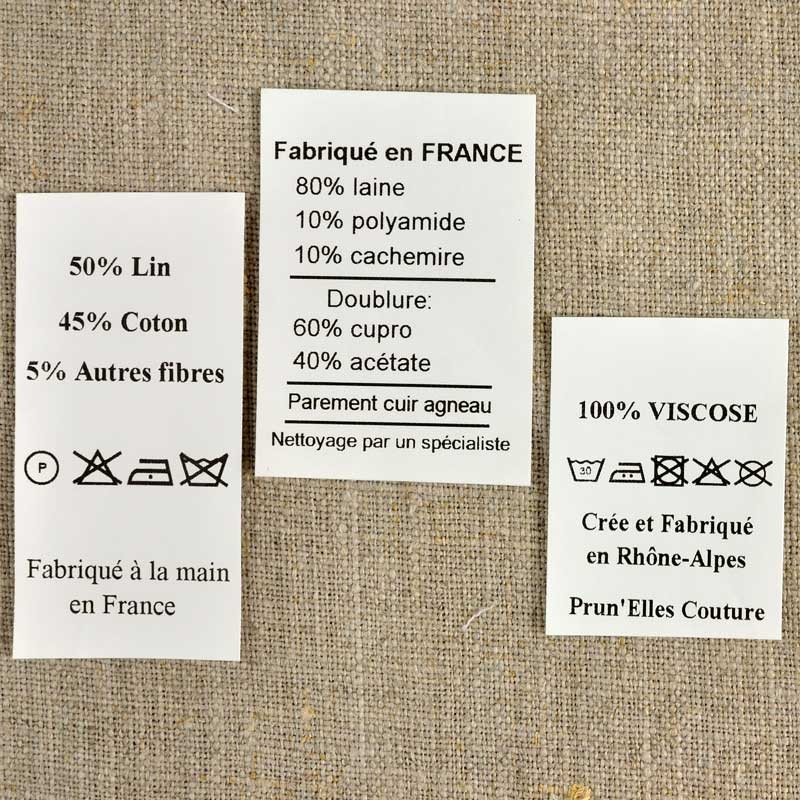Discover the ultimate guide to custom clothing labels in the US and India. Learn about types, designs, materials, costs, and trends to enhance your brand’s appeal and marketability.
Key Takeaways
- Understand the importance and benefits of custom clothing labels.
- Discover the types of clothing labels available and their uses.
- Learn about the process of creating and designing custom clothing labels.
- Explore the cost factors and pricing structures for custom labels.
- Get insights into market trends in the US and India.
Introduction to Custom Clothing Labels
In the ever-evolving fashion industry, custom clothing labels have emerged as a crucial element for both brands and consumers. These labels are not just about providing information; they embody the identity and ethos of a brand, making a lasting impression on customers.
Custom clothing labels serve multiple purposes—they inform, brand, and sometimes even influence buying decisions. With the increasing demand for personalized and high-quality apparel, the importance of well-designed, durable, and informative labels cannot be overstated.
Importance of Custom Clothing Labels
Branding and Identity
One of the primary roles of custom clothing labels is to establish a brand’s identity. By using unique designs, logos, and information, labels help in differentiating one brand from another in a competitive market.
“Your brand is what other people say about you when you’re not in the room.” – Jeff Bezos
Legal Requirements
In both the US and India, clothing labels are mandated by law to include certain information such as fabric content, care instructions, and country of origin. This ensures transparency and helps consumers make informed choices.
Customer Loyalty
Custom labels enhance the overall perception of the product, contributing to customer satisfaction and loyalty. A well-crafted label can significantly improve a customer’s experience with the product, encouraging repeat purchases.

Types of Custom Clothing Labels
Understanding the different types of clothing labels is essential to choosing the right one for your brand. Here are some of the most popular types:
Woven Labels
Woven labels are made on a loom using threads. They are durable and offer a high-quality look and feel, making them ideal for high-end fashion brands.
Printed Labels
Printed labels are made by printing directly onto fabric. They are versatile and cost-effective, suitable for a wide range of products.
Heat Transfer Labels
Heat transfer labels are applied using heat and pressure. They are smooth to the touch and are often used for sportswear and activewear.
Embroidered Labels
Embroidered labels involve stitching the design directly onto the fabric. They provide a luxurious and textured appearance.
Tagless Labels
Tagless labels are printed directly onto the fabric, eliminating the need for a physical tag. They are popular for comfort-focused garments like underwear and t-shirts.
| Type of Label | Pros | Cons |
|---|---|---|
| Woven Labels | Durable, High-quality appearance | Higher cost |
| Printed Labels | Cost-effective, Versatile | Less durable over time |
| Heat Transfer Labels | Smooth, Comfortable | Can fade with washing |
| Embroidered Labels | Luxurious, Textured | Expensive, Limited detail |
| Tagless Labels | No irritation, Comfort | Limited design options |
Designing Your Custom Clothing Labels
Key Considerations
When designing custom clothing labels, there are several key considerations to keep in mind:
Brand Identity: Your label should reflect your brand’s identity, including logo, colors, and typography.
Label Size and Shape: Choose a size and shape that complements your garment without being intrusive.
Information: Include necessary information such as care instructions, fabric content, and size.
Aesthetics: Ensure that the design is visually appealing and aligns with your brand’s aesthetic.

Designing Tips
- Keep it Simple: A clean, simple design is often more effective and legible.
- Use High-Quality Materials: Opt for materials that are durable and feel good to the touch.
- Consider the Garment: Ensure the label complements the garment it will be attached to.
- Legibility: Use fonts and colors that are easy to read.
Materials Used in Custom Clothing Labels
The material you choose for your custom clothing labels can significantly affect their durability and appearance. Here are some common materials:
Satin
Satin labels are smooth and shiny, offering a luxurious feel. They are often used for high-end garments.
Cotton
Cotton labels are soft and natural, suitable for eco-friendly and organic clothing lines.
Polyester
Polyester labels are durable and versatile, making them ideal for a wide range of applications.
Damask
Damask labels are a type of woven label known for their fine detail and high-quality finish.
| Material | Characteristics | Best For |
|---|---|---|
| Satin | Smooth, Shiny | High-end garments |
| Cotton | Soft, Natural | Eco-friendly, Organic clothing |
| Polyester | Durable, Versatile | General use |
| Damask | Fine detail, High-quality finish | Luxury fashion |
Printing Techniques for Custom Clothing Labels
Various printing techniques can be used to create custom clothing labels. Each method has its own advantages and is suitable for different types of labels and fabrics.
Screen Printing
Screen printing involves applying ink through a stencil. It is cost-effective for large quantities and produces vibrant colors.
Digital Printing
Digital printing uses digital technology to print directly onto the fabric. It is ideal for complex designs and smaller quantities.
Flexographic Printing
Flexographic printing uses flexible plates to transfer ink. It is suitable for large runs and produces consistent results.
Sublimation Printing
Sublimation printing involves transferring dye onto the fabric using heat. It is perfect for synthetic fabrics and produces high-quality images.
| Printing Technique | Pros | Cons |
|---|---|---|
| Screen Printing | Vibrant colors, Cost-effective | Limited detail for complex designs |
| Digital Printing | Ideal for complex designs | Higher cost for large quantities |
| Flexographic Printing | Consistent results, Large runs | Set-up cost can be high |
| Sublimation Printing | High-quality images | Only suitable for synthetic fabrics |
Cost Factors in Custom Clothing Labels
The cost of custom clothing labels can vary widely based on several factors. Understanding these factors can help you budget effectively and make informed decisions.
Quantity
Ordering in bulk can significantly reduce the cost per label. However, small runs might be more expensive per unit.
Material
The choice of material impacts the cost. High-quality materials like satin and damask are more expensive than polyester or printed labels.
Design Complexity
Complex designs with multiple colors and intricate details will cost more to produce.
Printing Technique
The printing technique used can also affect the cost. For example, screen printing is cost-effective for large runs, while digital printing is better for small quantities but can be more expensive.
| Cost Factor | Impact on Cost |
|---|---|
| Quantity | Bulk orders reduce cost per unit |
| Material | Higher quality materials are more expensive |
| Design Complexity | Complex designs increase cost |
| Printing Technique | Choice of technique affects cost |
Market Trends in the US and India
The markets in the US and India have distinct characteristics when it comes to custom clothing labels. Understanding these trends can help you tailor your approach to each market.
US Market Trends
In the US, there is a growing demand for sustainable and eco-friendly labels. Consumers are increasingly concerned about the environmental impact of their purchases, and brands are responding by using organic and recycled materials for labels.
Indian Market Trends
In India, there is a strong emphasis on traditional craftsmanship and regional textiles. Custom labels that reflect cultural heritage and artisanal quality are highly valued. Additionally, the rise of e-commerce in India is driving demand for personalized and branded labels to enhance product differentiation.
Comparative Analysis
| Aspect | US Market | Indian Market |
|---|---|---|
| Sustainability | High demand for eco-friendly labels | Emerging interest, growing market |
| Cultural Relevance | Focus on modern, minimal designs | Emphasis on traditional and regional designs |
| E-commerce Impact | Significant, mature market | Rapidly growing, high potential |
Best Practices for Custom Clothing Labels
To maximize the impact of your custom clothing labels, it’s essential to follow some best practices.
Prioritize Quality
Ensure your labels are made from high-quality materials and printed using reliable techniques. This not only enhances the perceived value of your product but also ensures longevity.
Focus on Branding
Your labels should consistently reflect your brand identity. This includes using your logo, brand colors, and fonts.
Include Essential Information
Make sure your labels include all necessary information, such as care instructions, fabric content, and size. This is not only a legal requirement but also helps in providing a better customer experience.
Stay Updated with Trends
Keep an eye on market trends and consumer preferences. This will help you stay relevant and meet the evolving needs of your customers.
Eco-Friendly Options
Consider using sustainable materials and processes. Eco-friendly labels are increasingly popular and can enhance your brand’s reputation.
Case Studies: Success Stories
Case Study 1: Eco-Conscious Fashion Brand
An emerging fashion brand in the US focused on sustainable clothing. They opted for custom cotton labels made from organic materials. By promoting their eco-friendly approach through their labels, they attracted a dedicated customer base that values sustainability.
Case Study 2: Traditional Indian Apparel
A traditional Indian clothing line used custom woven labels featuring intricate designs that reflect the cultural heritage of their products. This helped them stand out in a crowded market and appeal to consumers looking for authentic, artisanal garments.
| Brand | Strategy | Outcome |
|---|---|---|
| Eco-Conscious Fashion Brand | Organic cotton labels | Increased brand loyalty, eco-friendly reputation |
| Traditional Indian Apparel | Intricate woven labels | Differentiation, cultural appeal |
Conclusion

Custom clothing labels play a vital role in the fashion industry, serving as a bridge between the brand and the consumer. Whether you are a burgeoning brand in the US or a traditional apparel maker in India, investing in high-quality, well-designed labels can significantly enhance your product’s appeal and marketability.
By understanding the different types of labels, the design process, cost factors, and market trends, you can make informed decisions that will help you create labels that not only meet legal requirements but also resonate with your target audience.
Incorporate these insights and best practices into your labeling strategy to ensure your brand stands out in the competitive fashion landscape. Remember, the right label is more than just a tag; it’s a powerful tool for branding, customer satisfaction, and market differentiation.
“The details are not the details. They make the design.” – Charles Eames
Key Phrases and Related Keywords Used:
- Custom clothing labels
- Woven labels
- Printed labels
- Heat transfer labels
- Embroidered labels
- Tagless labels
- Label design
- Material for labels
- Printing techniques for labels
- Cost of custom labels
- Market trends in the US and India
- Sustainable labels
- Eco-friendly clothing labels
- Traditional Indian clothing labels
- Branding with labels
